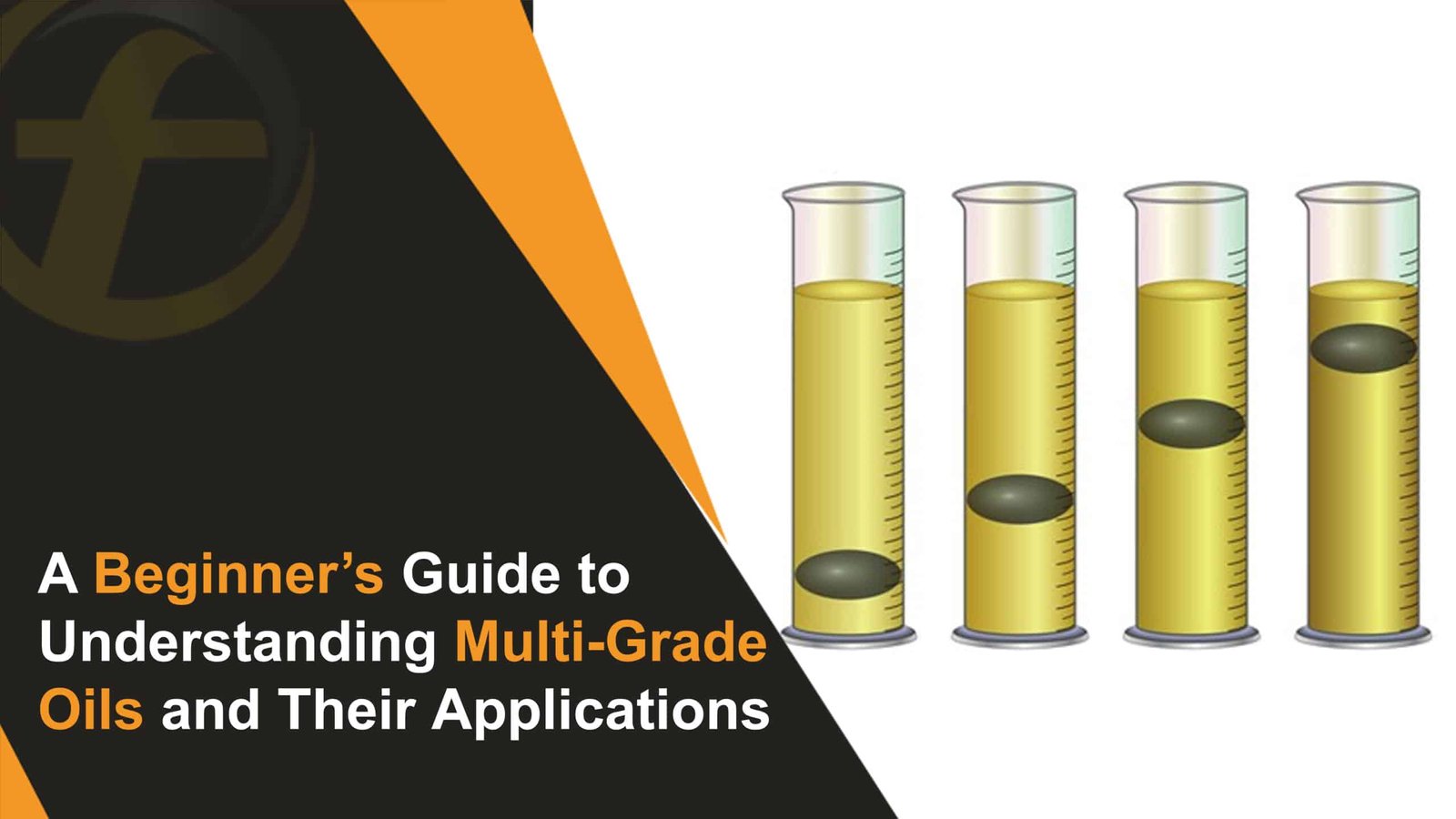
Engine oil keeps your vehicle running smoothly by reducing friction and protecting engine parts. But did you know that not all oils work the same way? Multigrade Oil is a special type of Oil that works in both hot and cold temperatures. This means your vehicle can start easily in winter and stay protected in the summer heat.
In this guide, we’ll explain what multigrade Oil is, how it works, and why it’s a great choice for your engine. Whether you’re new to cars or want to learn more, this guide will help you understand engine oil!
Key Takeaways:
- Multigrade oil works in all temperatures, ensuring smooth engine performance.
- Viscosity matters – The numbers (e.g., 5W-30) show how Oil flows in hot and cold conditions.
- Regular oil changes keep engines protected as additives break down over time.
- Extreme temperatures affect Oil – Heat causes sludge, and cold thickens Oil.
- Choosing the right Oil extends engine life – Follow your car’s manual.
What is Multigrade Oil?
Multigrade Oil is a special type of engine oil that works well in both cold and hot temperatures. It has two numbers in its name, like 5W-30 or 15W-40. The “W” stands for winter, meaning the Oil flows well in cold weather, while the second number shows how thick it stays when the engine is hot.
How Does Multigrade Oil Work?
This Oil is made by mixing a thin base oil with special additives called VI improvers. These additives help the Oil stay the right thickness no matter the temperature. For example, a 15W-40 oil flows like a 15W oil when it’s cold and like a 40-weight oil when it’s hot.
Some oils, like 80W-90 or 85W-140, may seem like multigrade oils, but they don’t have VI improvers. Instead, they naturally meet these grades without extra additives.
Benefits of Multigrade Oil
- Works All Year: No need to change Oil for different seasons.
- Easier Cold Starts: Helps your engine start faster in winter.
- Less Battery Drain: The engine doesn’t have to work as hard in the cold.
- Handles Heat Well: Protects the engine even in hot weather.
- Saves Fuel: The engine warms up faster, using less gas.
- Quick Lubrication: Protects engine parts right away, reducing wear.
For example, 15W-40 Oil takes about 1 minute and 45 seconds to fully lubricate an engine at -25°C, much faster than single-grade oils. But in extreme cold, a 5W-40 synthetic oil is even better.
Downsides of Multigrade Oil
- Costs More: It is pricier than single-grade oils.
- Breaks Down Over Time: The additives can wear out, making the Oil less effective.
- Can Cause Wear: If the additives break down too much, the Oil might not protect the engine properly.
Even though multigrade oils cost more, they protect your engine better in all temperatures. Checking your Oil regularly can help keep your engine running smoothly!
How Does a Heat Wave Affect Multigrade Engine Oil?
Multigrade engine oil helps keep the engine running smoothly in hot and cold weather. It reduces wear and protects engine parts, but extreme heat can still cause problems.
When the Oil gets too hot, a few things can happen:
- Sludge can build up, making the engine dirty.
- Rust can form, which damages metal parts.
- The engine can wear out faster, leading to repairs.
Heat can also cause important additives in the Oil to evaporate. These additives help the oil work in different temperatures, so if they disappear, the Oil won’t protect the engine as well.
To keep your engine safe during a heat wave, check your Oil regularly and use high-quality Oil that can handle extreme heat.
Types of Engine Oil Grades
Engine oil comes in two types: single-grade and multigrade. The main difference is how they handle temperature changes. Multigrade oils have special additives that help them work well in both hot and cold weather.
Single-Grade vs. Multigrade Oils
- Single-Grade Oils: These oils stay the same thickness no matter the temperature. They work well in either hot or cold weather, but not both.
- Multigrade Oils: Oils like 10W-30 and 5W-40 can adjust to different temperatures. They stay thin in the cold for easy engine start-up and thick in the heat to protect engine parts.
How Does Cold Weather Affect Multigrade Engine Oil?
Cold weather can make multigrade engine oil thicker and harder to flow. This makes it tough for the Oil to reach all parts of the engine, which can cause more wear and tear.
Here’s what happens when it gets too cold:
- Oil thickens, making it harder for the engine to start.
- Additives might stop working, so the Oil won’t protect the engine as well.
- Oil can separate, especially if it’s a blend of different base oils.
How to Protect Your Engine in Cold Weather
Engine oil is made to handle different temperatures, but extreme cold can still cause problems. If you’re moving to a very cold or hot place, you might need to switch to a better-suited oil.
Changing your Oil is much cheaper than fixing a broken engine!
Types of Lubricants
Lubricants help reduce friction and keep machines running smoothly. There are four main types of lubricants: Oil, grease, dry lubricants, and penetrating lubricants. Each one has a different job, so using the right one can help protect your equipment and save money.
Oil
Oil is a thin and runny lubricant that works best for fast-moving parts like engines and machines. It spreads easily but doesn’t last long because it absorbs quickly. Oil is not great for high heat or rust protection, but it’s good for keeping things moving smoothly.
Grease
Grease is thicker and stickier than Oil, making it great for hot and heavy-duty parts like gears and bearings. It doesn’t wash away easily and stays in place longer, giving better protection. Most greases are water-resistant and don’t dissolve in Oil.
Dry Lubricants
Dry lubricants come in powder or spray form and create a smooth protective layer on surfaces. They don’t attract dust, which makes them great for locks, hinges, and other small moving parts. However, they can gum up over time, so cleaning is important.
Penetrating Lubricants
Penetrating lubricants are thin and fast-acting, helping to loosen stuck parts like nuts, bolts, and door hinges. They soak into tiny spaces, making things move again. However, they don’t last long and need frequent reapplying.
Which Lubricant Should You Use?
Each lubricant is made for different situations. Oil is great for moving parts, grease sticks to heavy-duty parts, dry lubricants reduce dust buildup, and penetrating lubricants help free stuck parts. Choosing the right one keeps machines working longer and saves you from costly repairs!
Understanding Motor Oil Grades
Motor oil is classified by the Society of Automotive Engineers (SAE) based on how thick or thin it is—also called viscosity. You might see numbers like 5W-30 on an oil bottle. But what do they mean?
What Do the Numbers Mean?
- The first number (like 5W) tells how the Oil flows in cold temperatures. A lower number (like 0W or 5W) means the Oil stays thin in cold weather, making it easier for the engine to start.
- The second number (like 30, 40, or 50) shows how thick the Oil is when the engine gets hot. A higher number means the Oil stays thicker, helping protect engine parts from heat and wear.
For example, 10W-30 Oil flows well in the cold but also stays thick enough when hot to protect the engine.
Common Motor Oil Types
- 0W-20 – Helps save fuel; used in newer cars.
- 0W-30 – Good for cold weather; common in some Asian cars.
- 5W-30 – Works in most temperatures; a popular choice.
- 5W-40 (Synthetic) – Strong protection in all conditions, great for high-performance engines.
- 10W-40 – Used in older cars and diesel engines.
Choosing the right Oil helps keep your engine running smoothly and lasting longer!
How to Pick the Right Engine Oil?
Choosing the right engine oil helps your car run smoothly and last longer. Here’s what to do:
- Check Your Car’s Manual – It tells you the best oil type and thickness (like 5W-30).
- Look for Quality Labels – Make sure the Oil has API SN or ILSAC GF-6 approval. This means the Oil meets good standards.
- Think About the Weather – If you live in a cold place, thinner Oil (0W-20) is better. For hot weather, thicker Oil (10W-40) works best.
Using the right Oil protects your engine and keeps your car running well!
Bottom Line
Multigrade Oil is a great choice because it works in both hot and cold weather, keeping your engine safe. Using the right Oil helps your car run smoothly and last longer. Just remember to check your car’s manual and change the Oil when needed. Taking care of your engine with good Oil can save you money and prevent big repairs. Keep your vehicle happy, and it will keep running strong!
Good-quality oils, like Fubex Oil, give extra protection to modern engines. To keep your engine running smoothly and lasting longer, always use the right oil grade and change it when your vehicle manufacturer recommends it.
FAQs
Q1: What do the numbers on engine oil bottles mean?
The numbers on an engine oil bottle show how it flows in different temperatures. The first number (before the “W”) is for cold weather, and the second is for hot engine conditions.
Q2: Is it okay to mix different engine oil grades?
It’s not a good idea. Mixing oils with different grades can affect lubrication and may reduce engine protection.
Q3: How does viscosity affect engine oil and engine protection?
If engine oil is too thin when hot, it won’t protect the engine parts well, causing more wear and overheating. Using the right oil grade, as mentioned in the manual, helps keep the engine safe and running smoothly.

Editor-at-Large
A passionate writer in the lubricant industry, Awais Iqbal has been covering oils, greases, and industrial fluids since the start of his career. At 25, he’s already written for blogs, catalogs, and brand guides across the UAE. Awais’s insights help companies connect with their audience, and his clear, helpful writing style is trusted by brands in the region.


